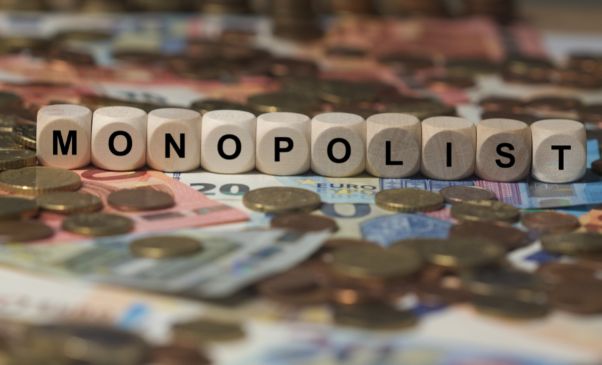Difference Between Monopolistic and Perfect Competition
Dec 01, 2023 By Susan Kelly
One of the most typical market structures is monopolistic competition. In this type of market, there is a single seller who produces, sells, and markets the product. Another type of market structure is that of perfect competition. In this model, many market participants offer items that are either similar or distinct from one another. The difference between these two types of markets can be quite significant to whether or not monopolistic competition will prevail over the perfect competition in different scenarios.
What is a Monopolistic Competition?
Monopolistic rivalry occurs when there are many producers but only a single consumer. They have to compete against each other in monopolistic competition. The buyers cannot cooperate to fix prices or allocate resources.
This market structure is less efficient than the perfect competition because it allows firms to price discriminate, which means they can charge different prices to customers. This allows them to earn higher profits and still sell their products at a lower cost than in perfect competition.
What is Perfect Competition?
Perfect competition is a market condition where there are many sellers and buyers, and each seller is competing against all the other sellers to sell their products. This means buyers can buy products at any price they want, and sellers cannot influence prices.
This is different from the monopolistic competition, where one seller dominates the market and can set the price for their product. In monopolistic competition, buyers compete against one seller for the product, leading to lower prices and less choice for consumers.
Advantages of Monopolistic Competition
Monopolistic competition is a market where a few sellers have a limited supply of a good or service. This means buyers can only purchase from sellers with the least amount of the good or service. Buyers are compelled to evaluate costs and quality to obtain the greatest value. This results in reduced pricing and higher customer quality due to less competition.
There are several advantages to monopolistic competition over the perfect competition:
- Monopolistic competition leads to lower prices and better quality because there is less competition.

- Monopolistic competition creates a more stable marketplace because it limits the number of sellers.
- Monopolistic competition is more efficient than perfect competition because it allows companies to concentrate on their unique strengths instead of fighting against each other for market share.
.
Disadvantages of Monopolistic Competition
Monopolistic competition is an economic structure in which a few sellers of a good or service exist. This type of market is less efficient than markets with many sellers and become disadvantages because it takes longer for buyers and sellers to find each other and negotiate a price.
Additionally, monopolistic competition leads to higher prices and fewer options for consumers. In addition, monopolies can be harmful to the economy because they can restrict innovation and lead to decreased production and lower wages.
Advantages of Perfect Competition
Perfect competition is an economic market model in which many sellers and buyers are interested in selling their products at the lowest possible price. This type of market is characterized by free and open competition, where sellers have no advantage over buyers and prices are determined by the forces of supply and demand. Prices are usually lower in perfect competition than in monopolistic competition.

One reason perfect competition is better than the monopolistic competition is that in a monopolistic market, one seller has a significant advantage over the others.
This advantage can be in terms of price, quantity, or quality. In perfect competition, however, many sellers try to sell their products at the same price. This means that no one seller can control the price of the product. As a result, buyers can expect to find the same product for the same price from any number of sellers.
Another benefit of perfect competition is that it allows for efficient production. In a monopolistic market, one company can produce an infinite amount of a given good or service. However, in perfect competition, producers are constrained by the resources at their disposal. This means who will produce products to meet customer demand rather than produce more.
Disadvantages of Perfect Competition
A market structure known as monopolistic competition occurs when several businesses sell the same product. This type of competition is less efficient than the perfect competition because it leads to lower prices and greater waste. Consumers also have fewer choices, which can lead to poor-quality products.
Furthermore, in monopolistic competition, firms have little incentive to improve their products because they fear losing market share to their rivals.
Perfect competition is a market structure where few firms are selling the same product, and there are no barriers to entry. This type of competition is more efficient than the monopolistic competition because it leads to lower prices and greater innovation.
Consumers also have many choices, which can lead to high-quality products. Furthermore, in perfect competition, firms have strong incentives to improve their products because they know that their rivals will not be able to catch up.
Conclusion
When businesses operate in a monopolistic market, the firm is the only producer of a particular good or service. This means the company can control prices and set them where it wants. In perfect competition, there are many producers of a good or service, and each producer tries to undercut the others' prices to attract customers. Because there is so much competition, firms in perfect competition cannot keep their prices high for very long because eventually, someone will find a way to produce the good or service more cheaply than anyone else.
-
 Investment Nov 12, 2023
Investment Nov 12, 2023The Prime Options Trading Platforms And Brokers
It has powerful trading tools as well as a platform that is easy to use, and there are no account minimums. Includes a flexible platform with charting tools that can be changed and advanced tools for options. It offers access to a wide range of markets as well as trading tools, and its commission rates are among the best in the industry. Offers an easy-to-use platform with many learning tools and no account minimums. It offers a trading platform that can be changed to fit your needs, advanced options tools, and a strong learning center.
-
 Know-how Jan 22, 2024
Know-how Jan 22, 2024The Mechanism of Pour-Over Wills: A Comprehensive Guide
Discover the benefits and misconceptions of pour-over wills in estate planning. Learn how they provide control, privacy, and a streamlined process for asset distribution.
-
 Know-how Oct 17, 2023
Know-how Oct 17, 2023Best Cheap Renters Insurance in Georgia
We did a pricing comparison throughout Georgia to see which firms provide the most affordable renters insurance.
-
 FinTech Nov 07, 2024
FinTech Nov 07, 2024How Fiserv AI Integration is Driving Productivity and Efficiency
Learn how Fiserv uses AI to boost productivity, facilitate digital payments, and accelerate innovation in financial services.
